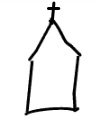How Estate Planning Works
It's as Easy as: A B C
This is the "A" Part
Let's begin with your Estate. All of us have a variety of Assets. Usually, these fall into three categories:
1) Real Property. This would be your home and other real properties you own
2) Personal Property. This would be property like automobiles, furniture, jewelry, computers, etc
3) Titled Property. This would be items like bank and brokerage accounts, life insurance, retirement plans and other financial instruments
This is the "B" Part
We all have heirs or Beneficiaries. Typically, these are your children - those who you want to receive your assets after you pass. This could also be a charity like your church. The objective of an Estate Plan then, after our passing, is to make sure "A" gets to "B". Pretty simple. However, there are sometimes Conditions.


This is the "C" Part
A Condition can be a future, uncertain event OR a known issue. In either case, something needs to be done. As an example, if one of your beneficiaries were only 12 years old he would be unable to receive your assets until he reached a certain age, usually 18 or above. Therefore, a provision would need to be made to allow for this condition. In addition to affecting a Beneficiary, a Condition can affect the individuals setting up an estate plan and how assets transfer. Consequently, the real objective of an Estate Plan is to get "A" to "B"while taking into consideration "C" - a variety of potential conditions. See video to learn how, for most people, these objectives can be accomplished.